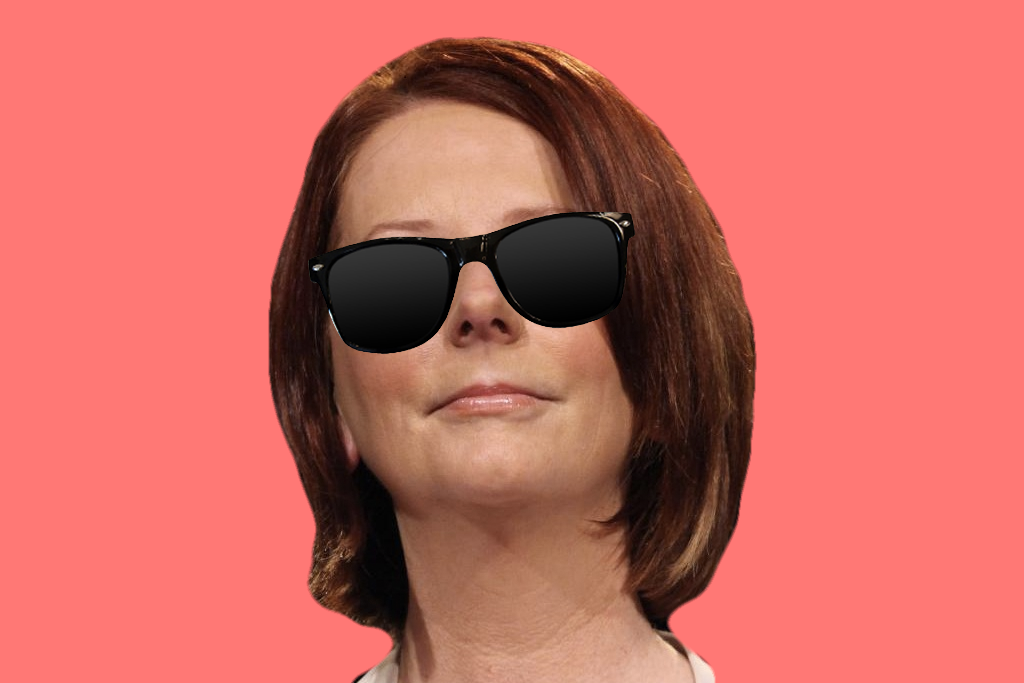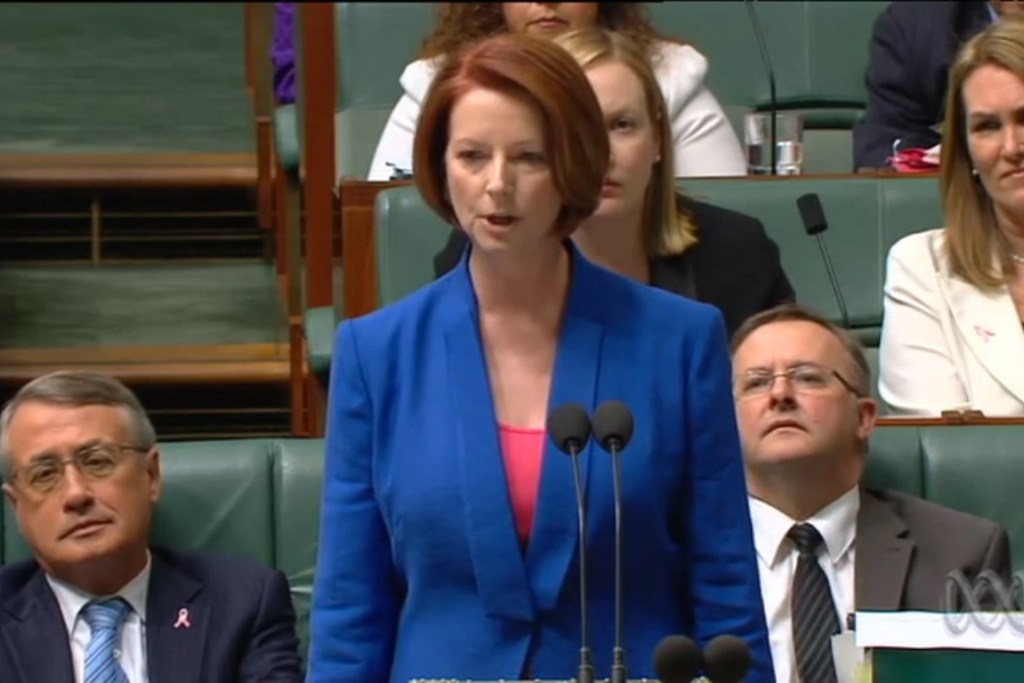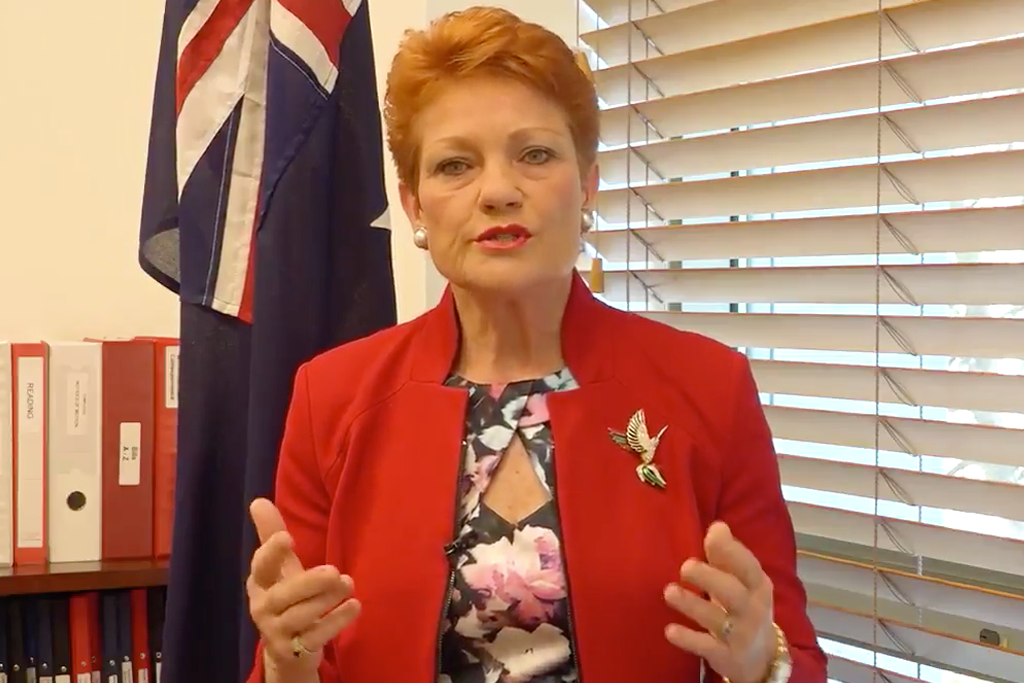The Return Of Julia: Australia Likes The Idea Of A Woman In Power, But Not Too Much Power

At the apex of her time as the first female Prime Minister of Australia, Julia Gillard was routinely labelled a liar, a witch, a bitch and had her body, clothes and even her own family vilified by a hostile press and unforgiving public that was accustomed to being led by men.
Today, the same woman who inspired such misogynistic words still has labels thrown at her, but they’re more likely to be “fierce” and “inspirational”.
Five years after leaving politics, Gillard is now spoken of politely, sometimes even glowingly; the tone has shifted dramatically, dominated by a sense of respectability that was cruelly absent during her three years in power.
But why did it take having to leave politics for Gillard to be treated with respect?
Back In The Kitchen, Gillard
Since she was dethroned by Kevin Rudd in 2013, Gillard has embraced global education for girls as her passion project, and now serves as chairwoman for the Global Partnership for Education. She has been appointed a distinguished fellow with the Center for Universal Education at the Brookings Institution in Washington, and in June, she made her most significant step towards a new public identity by stepping into the role of chairwoman of BeyondBlue, Australia’s leading mental health advocacy group.
That appointment was met with praise from all sides of politics, including former Liberal state premier and inaugural BeyondBlue chairman, Jeff Kennett. On her appointment, Kennett stated that Gillard’s “warmth and her commitment to the cause make her the ideal person to lead BeyondBlue”.
Contrast this to when the Liberal Party held a fundraiser in 2013, in which one of the menu items was the “Julia Gillard Kentucky fried Quail – small breasts, huge thighs and a big red box”. Or when Liberal Senator Bill Heffernan described Gillard, who is childless, as “deliberately barren“. And let’s not forget the time Alan Jones said Gillard should be shoved in a chaff bag and dumped at sea, or when he said Gillard’s father “died of shame“.
The fact that Gillard is back working in the arena of traditional female concerns — health and education — is linked to this shift in the public and media’s approach to Gillard, says Helen Sullivan, director of Crawford School of Public Policy at Australian National University,
“She’s doing things that women are allowed to do and in these roles, she’s not challenging any particular positions of power,” Sullivan told Junkee. “This is about the proximity of women to power; there are people who have a problem with anyone placed in a position of power who’s anything other than a white man of a certain age.”
Gillard became Australia’s first woman prime minister in 2010, when she challenged Kevin Rudd in an internal party contest that resulted in her wining the battle, but not the war.
The acidic welcome that greeted this history-making moment was just the opening act of a tenure in which Gillard was scrutinised under an intense lense of sexism that also judged her performance not as an individual, but as a representative of all women.
“What was particularly astonishing about how she was treated was the lengths that some journalists and commentators would go to to demean her, whether it was her not having children or that infamous demonstration in which she was called a ‘witch’ and a ‘bitch’,” Sullivan says. “There were levels of sexism and misogyny that went way beyond what any male politician would face”.
The Double Bind
Maria Maley, lecturer in politics at Australian National University, says that under the ‘Gender Double Bind’, men’s roles are associated with being dominative and assertive, while women’s roles associated with being helpful and warm, so when Gillard became PM, this greatly confounded people.
“If women in politics are strong and assertive, then they’re not liked because they’re transgressing our expectations of gender norms. But if women are helpful and emotional, then we don’t see them as good leaders.”
“That means women in politics have to very carefully negotiate those two contradictory expectations and I think a lot of the reaction Gillard got was about her as a woman occupying that role.”
Following her low-key exit from parliament, Gillard went to ground, away from the harsh political spotlight. She ran the usual commutative lap of honour that all former prime ministers are expected to do — write a memoir, endorse a few candidates, and maintain a quiet, dignified presence on social media.
Congratulations to @ScottMorrisonMP – always an honour to serve. To the 29th PM, from the 27th PM, @TurnbullMalcolm there is a life after. Best wishes for the days to come.
— Julia Gillard (@JuliaGillard) August 24, 2018
As Gillard faded into history, Australians moved forward, distracted by the ongoing political circus and unimpressed by our history-making first woman PM.
But now, Gillard 2.0 has made her public splash, a deliberate move to re-introduce herself to the media and the public, and her soft relaunch appears to have given her a chance to reset the public narrative about what she has — and can — contribute to public life.
Agreeing with Gillard’s politics is irrelevant to the way she was treated during her prime ministership. The gendered abuse was a toxic front that dominated Gillard’s political narrative, making it almost impossible to objectively analyse her actual policies and political vision.
Like all women who reach the top of the ladder before other women, Gillard bore the brutal brunt of a system that is deeply suspicious of women in power, in control and in charge. For while she made history, she paid a heavy price for doing so. The next Australian woman prime minister will also face gendered challenges, but there is hope that it will be to a lesser degree.
Australia Likes Women In Power, But Not Too Much Power
Former deputy Liberal Party leader and Foreign Affairs Minister Julie Bishop was once hailed as a future prime minister, with polling showing respectable public support. Of course, as history reveals, Gillard too was also a popular and respected deputy prime minister and education minister. Had Bishop prevailed in the recent leadership spill – which arguably, she should have – she too would likely have had to negotiate the public’s expectations of what a woman in power is.
“When Gillard was deputy prime minister, we were much more comfortable with her and she had a lot of praise for being effective; we’re much more comfortable with women in subsidiary roles,” Maley says. “But when she took on the top job, it was considered extremely disruptive and she was expected to modulate her character.”
Sullivan adds that there was little evidence that “anything has been learned about gender and politics in Australia”.
Politics is a bloody sport and one that Gillard excelled at in many ways. But it also demands a heavy price, and for women, the biggest price is respect, or lack thereof.
For women in politics, respect is something that must be earned time and time again, often outside of actual politics. The heavy price that Gillard paid for being the first woman to do what far too many people still think should be a man’s job, demonstrates that respect is a currency that remains tied to the traditional idea that masculinity with that of power and authority.
That it was not what she achieved – and failed to do – as prime minister that defines her leadership but the fact that she simply challenged male power and faced a vicious backlash, says everything about Australia’s relationship with gender and power.
Alana Schetzer is a former news reporter at The Age and is now an academic and freelance journalist who specialises in social justice, politics and culture.

